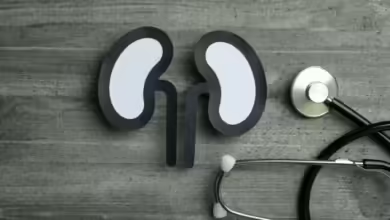Avoid ignoring discomfort in this area of the body if you don’t want these catastrophic illnesses to develop
Our bodies use pain to tell us when something is wrong. While small aches and pains are sometimes transient, chronic discomfort in certain parts of the body should never be disregarded. Ignoring pain in these areas might result in the emergence of major medical disorders. This post will discuss how vital it is to pay attention to your health and seek medical help when necessary.
A Source of Quiet Warnings: The Head
Even though they are often experienced, not all headaches are the same. They could be a sign of more serious problems.
1. More Than Just a Headache: Migraines
Migraines are severe headaches with throbbing pain that may come with nausea and sensitivity to light and sound. Ignoring recurrent migraines might have serious consequences.
Millions of individuals suffer from migraines across the globe, and because to its incapacitating nature, they often miss work days and have a worse quality of life. These strong headaches are not just a minor inconvenience. They may indicate underlying issues with the brain’s nerves and blood vessels.
2. A Hidden Threat: Temporal Arteritis
A indication of temporal arteritis, which if untreated might result in blindness, is persistent discomfort in the temples. Giant cell arteritis, often known as temporal arteritis, is more common in elderly persons. It entails inflammation of the head’s major arteries, especially the temporal arteries on the sides of the head.
Temporal arteritis may cause excruciating, throbbing pain that often radiates to the jaw and neck. But the risk for blindness makes this illness extremely worrisome. Inflammation that affects the arteries that carry blood to the eyes might cause permanent eyesight loss. Therefore, any inexplicable head discomfort should be swiftly examined, particularly if it is located around the temples.
Where Heart Health Matters Most: The Chest
Chest discomfort may be a sign of a number of serious medical conditions. Understanding the different forms of chest discomfort and knowing when it warrants worry are crucial.
3. Cardiovascular disease: A Silent Killer
Shortness of breath and chest discomfort are two symptoms that might indicate heart disease early on. Even while chest discomfort isn’t necessarily a sign of a cardiac condition, it’s important to pay attention to it, particularly if it’s a new or unexpected feeling.
Chest discomfort is often one of the earliest indications of heart disease, which continues to be one of the top causes of mortality globally. This discomfort, which is often characterized as a tightness, heaviness, or burning feeling, may happen even while you’re at rest. It’s a symptom that the coronary arteries may be narrowing or blocking, perhaps preventing adequate oxygen-rich blood from reaching the heart.
4. Lung Issues: Don’t Ignore Them
Chest pain or discomfort may be a sign of lung problems, such as infections or even lung cancer. Any disturbance in the lungs’ ability to do their essential job of oxygenating the blood may have very negative effects.
Lung-related chest discomfort might present differently from pain from the heart. It could be stabbing or sharp, and it might become worse when you cough or take heavy breaths. Chest pain may be caused by illnesses including pneumonia, bronchitis, or even lung cancer. Chest discomfort associated with the lungs should not be disregarded, particularly if it continues or is accompanied by other unsettling signs like bloody coughing or unexplained weight loss.
Vital Organs are Housed in the Abdomen.
The presence of abdominal discomfort may signal a number of underlying illnesses. Numerous important organs are housed in the abdomen, thus discomfort in this area may indicate a malfunction.
5. Gallstones: An Upsetting Surprising
Gallstones may cause excruciating discomfort in the upper right abdomen, which, if left untreated, might result in consequences. The gallbladder, a tiny organ under the liver, is where small, hard deposits called gallstones originate.
A gallbladder attack is the name for the terrible pain that results when a gallstone becomes stuck in a duct. Usually beginning quickly, the discomfort is centered in the upper right abdomen or just behind the breastbone. Ignoring this discomfort might result in potentially fatal consequences including gallbladder inflammation or clogged bile ducts.
6. Pancreatitis: A Serious Condition of the Pancreas
Pancreatitis, a potentially fatal illness, may cause abdominal discomfort, particularly in the upper abdomen. In the control of blood sugar levels and digestion, the pancreas is a key player.
When the pancreas is inflamed, which often happens as a result of drinking alcohol or gallstones, pancreatitis develops. Pancreatitis causes significant discomfort that is often felt in the upper abdomen and frequently radiates to the back. Ignoring this discomfort increases the risk of pancreatic problems, such as infection and organ failure, as well as additional damage.
The Back: A Center for Important Elements
Although back discomfort is often disregarded, it might indicate serious health issues. Since the back has a complicated structure, there are many potential causes of back discomfort.
7. Kidney Stones: An Excruciating Process
The existence of kidney stones may be indicated by excruciating back discomfort, which calls for medical care. Hard deposits called kidney stones develop in the kidneys and may be quite painful to move through the urine canal.
One of the most excruciating pains a person may go through is the discomfort of kidney stones, according to many people. It often begins in the lower back, behind the ribs, and may spread to the groin and lower abdomen. Ignoring kidney stone discomfort might result in consequences including kidney damage and urethral infections.
8. Spinal Conditions: Pay Attention to Your Backbone
Back discomfort that doesn’t go away might be caused by spinal issues like spinal stenosis or ruptured discs. The vertebrae, discs, and nerves that make up the spine are crucial for the body’s support and mobility.
Back discomfort may have many different reasons, but if it lingers or becomes worse, it might be an indication of spinal problems. The cushioning discs between the vertebrae may rupture or expand, which puts pressure on the nerves and causes herniated discs. The narrowing of the spinal canal known as spinal stenosis, on the other hand, may compress the spinal cord and nerves. If left untreated, these disorders may result in persistent, crippling pain.
Men’s and Women’s Concerns with the Lower Abdomen
In both sexes, lower abdominal pain may be a source of worry. It’s important to pay attention to lower abdomen discomfort even if the particular reasons might differ between men and women.
9. Appendicitis: An Urgent Surgical Situation
The lower right abdomen might experience excruciating pain from appendicitis, which calls for emergency surgery. The appendix is a little pouch in the lower right side of the abdomen that resembles a finger.
When the appendix becomes inflamed, often as a result of a blockage or an infection, it is called appendicitis. In most cases, the pain begins as a vague ache at the belly button, moves to the lower right abdomen, and eventually becomes acute and focused there. Ignoring appendicitis may result in a burst appendix, a serious emergency that poses a danger to life.
10. Recognize the Signs of Reproductive Health
Lower abdomen discomfort in men and women may be indicative of difficulties with the reproductive system, such as endometriosis or ovarian cysts. Any chronic pain in the lower abdomen should not be disregarded since reproductive health is a crucial component of general wellbeing.
Ovarian cysts, which are fluid-filled sacs on or within the ovaries, may be quite painful for women. Chronic pelvic discomfort may result from endometriosis, a disorder where tissue resembling the uterine lining develops outside the uterus. Lower abdomen discomfort in males might be caused by problems with the testicles or the urinary system. To treat and manage these issues, prompt medical examination is crucial.
Joints: Mobility Is Important
Joint pain is often linked to aging, but it may also signify a number of illnesses that impair mobility and general well-being.
11. More Than Just Wear and Tear: Arthritis
Arthritis may manifest as persistent joint discomfort, a disease that may become worse if left untreated. People of all ages are susceptible to the group of inflammatory joint illnesses known as arthritis.
Arthritis often causes persistent joint pain, stiffness, and edema. Ignoring these signs might eventually result in joint injury and decreased mobility. The key to treating arthritis efficiently and enhancing quality of life is early diagnosis and therapy.
12. Gout: A Joint Affair That Hurts
Intense joint pain, particularly in the big toe, may indicate gout, an arthritic condition that has to be treated. The rapid onset of excruciating joint pain, often in the big toe, is a defining feature of gout. When uric acid crystals build up in the joints, it causes inflammation and agonizing pain, which is the cause of gout. Even while gout attacks may seem episodic, ignoring them might cause more severe and regular attacks, which can cause joint damage and other problems. Your body uses pain to alert you to possible health issues. Ignoring some types of discomfort might result in the emergence of significant, even life-threatening disorders. It’s crucial to pay attention to your body, get medical help when necessary, and put your health first. A balanced diet, frequent exercise, and living a healthy lifestyle may all help avoid many of these ailments. Keep in mind that you are in control of your health.







